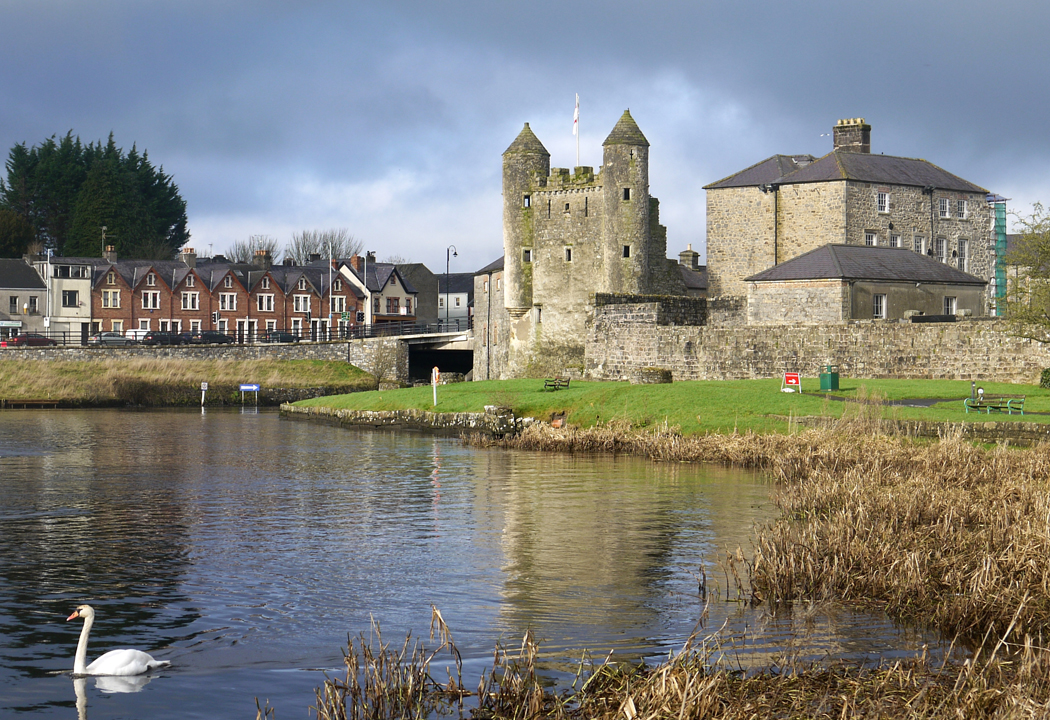Enniskillen Castle is to be transformed into a world class heritage attraction, thanks to a £2.37million grant from the Heritage Lottery Fund.
A donation of more than £2 million will secure that many of the historic buildings within the castle complex in Enniskillen will be restored and refurbished; further a new visitor centre will be built to replace the derelict building currently at the entrance to the site.
The result will be a major exhibition and museum, which will tell the extraordinary, often blood-drenched story of the castle and of the glories of County Fermanagh and its unique heritage and landscape.
Future developments
Sarah McHugh, manager of museum services at Fermanagh County Museum, said: “We’re thrilled to have been given this funding. The castle complex will become a great magnet for visitors, telling the story of the castle, the town and the county and become a true gateway to the entire region.”
There are plans to develop a new History Hub facility providing access to the museum’s archives, photographs, library, oral histories and digital film archive. There will also be four new galleries creating additional space to showcase the museum’s important collections of objects, images and oral histories relating to the region.
Paul Mullan, head of HLF in Northern Ireland said: “We feel passionately about this extremely important project which is genuinely world class. Our investment will provide a lasting legacy not just for Enniskillen but for the whole of Fermanagh. We are very grateful to all the National Lottery players who make this kind of funding possible.”
Enniskillen Castle: a history
Enniskillen Castle is one of the foremost archaeological and architectural monuments in Northern Ireland. It is a heritage asset of local, national and international interest with the potential to become the historic cornerstone of the area. The site is located within the town Conservation Area and within the wider Marble Arch Caves Global Geopark, the first ever International Geopark in the world.
Next to one of the narrowest crossing points between Upper and Lower Lough Erne, guarding one of the few passes into Ulster, the castle has been strategically important throughout its history. The site represents a microcosm of diverse histories from medieval stronghold, to Plantation Castle to later military barracks. Today, it houses two museums, Fermanagh County Museum and the Inniskillings Museum. The overall site is jointly promoted as Enniskillen Castle Museums and is managed by the Northern Ireland Environment Agency. Buildings within the historic complex include Monuments in State Care and Listed Buildings.
The original castle keep was built almost 600 years ago by the Gaelic Maguire chieftains.
The earliest known reference to the site occurs in the Annals of Ulster in 1439, which refers to Tomas Óg Maguire being taken prisoner in his own castle at Enniskillen by Domnall Maguire ‘the Freckled’. It is believed that Hugh ‘the hospitable’ Maguire had the castle built before his death in 1428. On an important international medieval pilgrimage route, Enniskillen Castle became the stronghold for the ruling Maguires and a centre for patronage of the arts and church. The blind poet Tadhg Dall Ó Huiginn painted an idyllic picture of the castle in the late sixteenth century. He wrote of the ‘fair castle, with its shining greensward…the white walled rampart amongst the blue hillocks.’ At the castle there were ‘poets and minstrels, satin-clad maidens weaving wondrous golden fringes, soldiers reclining, smiths preparing weapons.’

In the 16th century, the castle was attacked and burnt down on numerous occasions. One of the best documented assaults on the fortification took place in 1593/4. The castle was besieged and eventually captured by the English under Captain John Dowdall, but was recaptured by Hugh Maguire shortly afterwards. The events of the siege were recorded at the time by the soldier John Thomas on a remarkable bird’s eye watercolour now belonging to the British Library.
After the ‘Flight of the Earls’, the castle definitively came under English control in 1607. The castle keep was refurbished by Captain (later Sir) William Cole and the site expanded with the addition of the Scottish-influenced ‘Watergate’. This is the most distinctive feature of the castle with its twin turrets and is used as a symbol to represent the town and county.
During the Plantation period, the Castle was crucial to the development of the town of Enniskillen. In 1689, the island town was besieged and two local regiments were raised to defend it: the regiments became the Inniskillings Fusiliers (foot soldiers) and the Inniskillings Dragoons (cavalry). Enniskillen Castle is one of a number of important Plantation Castles in the County. Today, Fermanagh is recognised as having the greatest number of surviving ruins of Plantation Castles, as well as some of the best preserved examples, in the whole of Ireland.
The strategic importance of the castle continued to be a pivotal factor in succeeding centuries. The threat of a French invasion in the late 18th century led the Government to invest substantially in defence in Enniskillen. In 1796 Enniskillen Castle was refurbished as a barracks at a cost of £7,000. The castle barracks continued to expand throughout the 19th century and many of these buildings survive, including an attractive curved range for housing horses and gun carriages and a Magazine for storing ammunition.
During the twentieth century, the site has had a chequered history, variously being used as an army base and a council depot before becoming a heritage attraction. In 1965, a two-storey health clinic building was completed for the Western Health and Social Services Board who also occupied the adjacent Barrack Coach House. Both these buildings have been left empty and derelict since 1999. The most modern building on site is the purpose-built heritage centre, designed by Richard Pierce, and opened in 1992, now scheduled to be restored.
SOURCE:
Heritage Lottery Fund grants £2.37million to Enniskillen Castle
